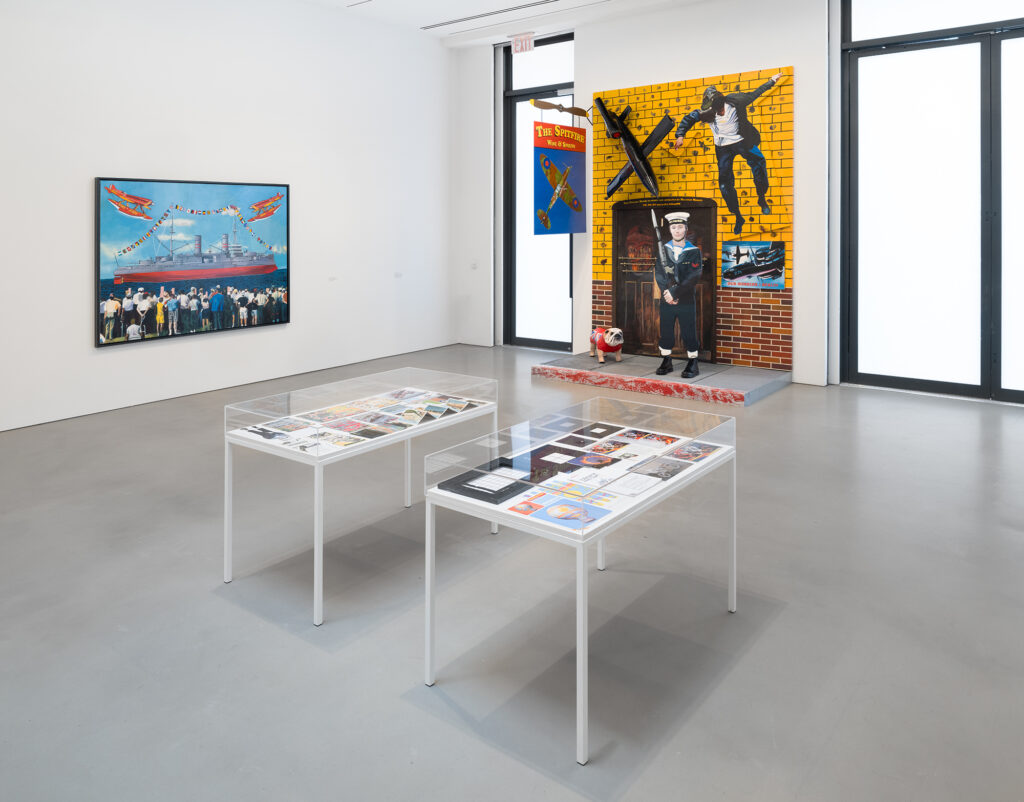
© The Estate of Malcolm Morley. Courtesy of Petzel, New York.
Malcolm Morley: Painting as Model is at once a museum-quality survey and an intimate view of Malcolm Morley, as the London-born New York artist, who is widely regarded as responsible for launching at least two major art movements—Photorealism and Neo-Expressionism—during the latter half of the twentieth century. Outstanding examples spanning 1959 to 2014 from both genres—mostly on loan from museums or private collections—are among the thirty-two major paintings and 3-D works, featured in the exhibition. Morley, who died in 2018, at age eighty-six, was the consummate artist’s artist. Those who knew him, even on a professional level, as I did, recognized that his eccentric, dynamic personality—full of wit and caustic humor—was reflected in all his artistic endeavors, including the works on view here.
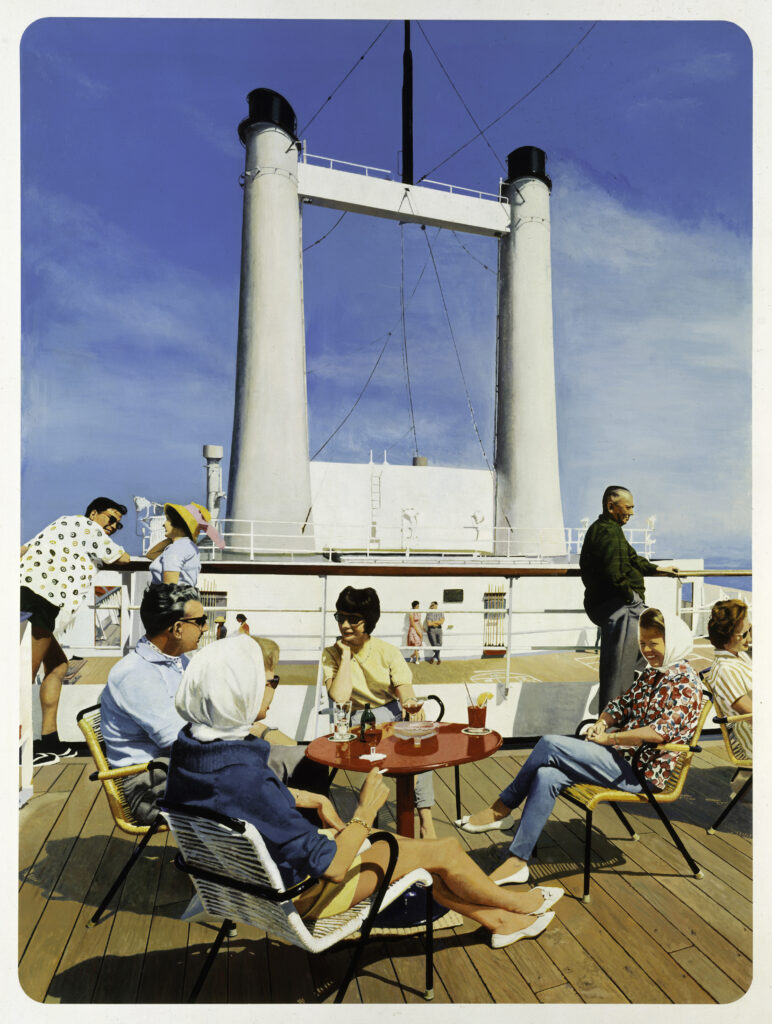
of the Metropolitan Museum of Art, New York. Image copyright © The Metropolitan Museum of Art. Image source: Art Resource, NY. Courtesy of the Estate of Malcolm Morley and Petzel, New York.
The evolution of Morley’s imagery stems from World War II, when he was a child in England. War images from throughout history—especially sea and air battles—and military regalia, are recurring motifs in Morley’s oeuvre. As a kid during The Blitz, Morley would watch aerial combat from rooftops of buildings in his London neighborhood. The genesis of his lifelong creative impulse centered specifically on a toy model of a battleship that he had painstakingly assembled and proudly displayed on his bedroom windowsill. During a German assault one night, he evacuated the building with his family shortly before a V-1 guided missile ripped through their apartment. The treasured toy model, along with the entire window frame, disappeared in the blast. Subsequently, this “lost object” appeared obsessively in many forms and variations in his artworks. One of the singular attractions of this exhibition is the inclusion of a cabinet filled with airplane and ship models, and other toys that Morley collected over the years, and which are painted at large-scale or as attached 3-D elements on many canvases.
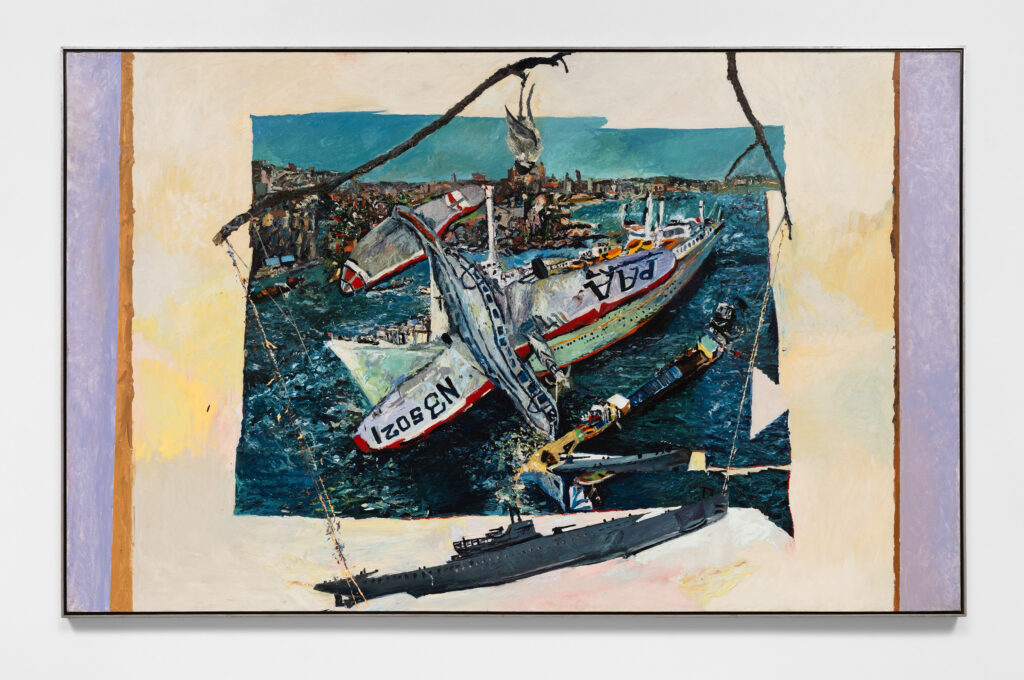
Morley had a troubled youth, including some jail time for housebreaking and petty theft. Encouraged by some the warders while incarcerated, he took a course in drawing and watercolor— from thereon his future path as an artist was set. He attended the Royal College of Art, London, from 1954–57, and soon after moved to New York City, where he worked as a waiter. He dove right away into the New York art scene, and over the next few years met Barnett Newman, Roy Lichtenstein, Andy Warhol, and Cy Twombly, whose work he particularly admired. He produced abstract serial images for a time, until he began to paint hyper-realistic pictures of ocean liners and battleships based on postcard photos, which he would greatly enlarge by squaring up the canvas and transposing the source images. Two large compositions from 1966, S.S. Amsterdam in Front of Rotterdam and On Deck (on loan from the Metropolitan Museum of Art) are highlights of the exhibition. These works caused a stir that year when they were shown for the first time at the Guggenheim Museum, in a groundbreaking group show, The Photographic Image. Morley suddenly found himself at the head of the nescient Photorealist movement, although he always preferred the term “Superrealism,” in its echo of Suprematism, the rigorously abstract, revolutionary Russian art movement he greatly appreciated.
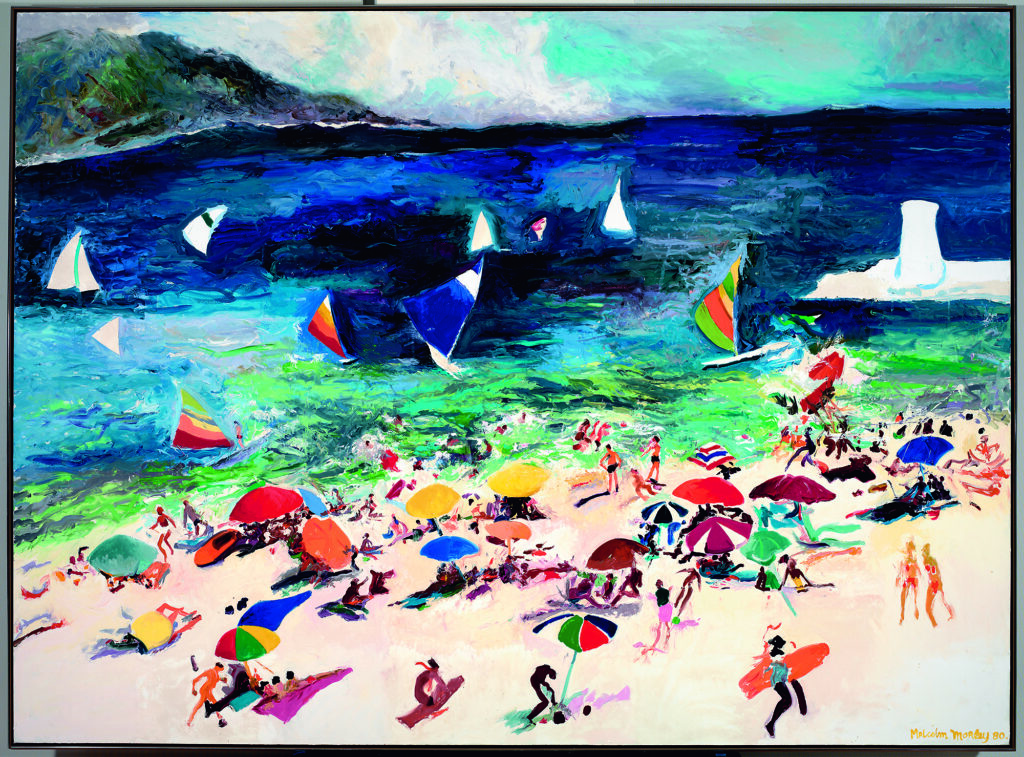
The cool resolve and sharp-focus precision of the Photorealists soon became a much-imitated art-world phenomenon. As somewhat of an outlier, Morley was uncomfortable at the helm of any kind of movement. A champion of the early Photorealists, Salvador Dalí repeated in interviews that among the genre’s pioneers—such as Richard Estes, Robert Bechtle, Audrey Flack, Charles Bell, and Chuck Close—that he predicted that Morley would be the most likely to “assassinate painting.” This was a prophetic pronouncement as the ever-restless Morley began to deconstruct his photorealist source images, often with violent, painterly panache. The Age of Catastrophe (1976), which depicts a passenger plane crashing into a luxury cruise liner, demonstrates his transition toward a new painterly language of slashing brushstrokes, vivid color, and feverish energy. By 1980, Morley was emersed in a visual vocabulary of lush leisure imagery—bathers reclining on the beaches of the Côte d’ Azur and Crete, for instance, or flying kites off the decks of luxury yachts, as in La Plage (1980), and The Palms of Vai (1982), resplendent examples on view here. These works inspired a new generation of artists, including Julian Schnabel, Eric Fischl, Francesco Clemente, all of whom recognized Morley as a leader of the new Neo-Expressionist movement that would thrive throughout the 1980s.
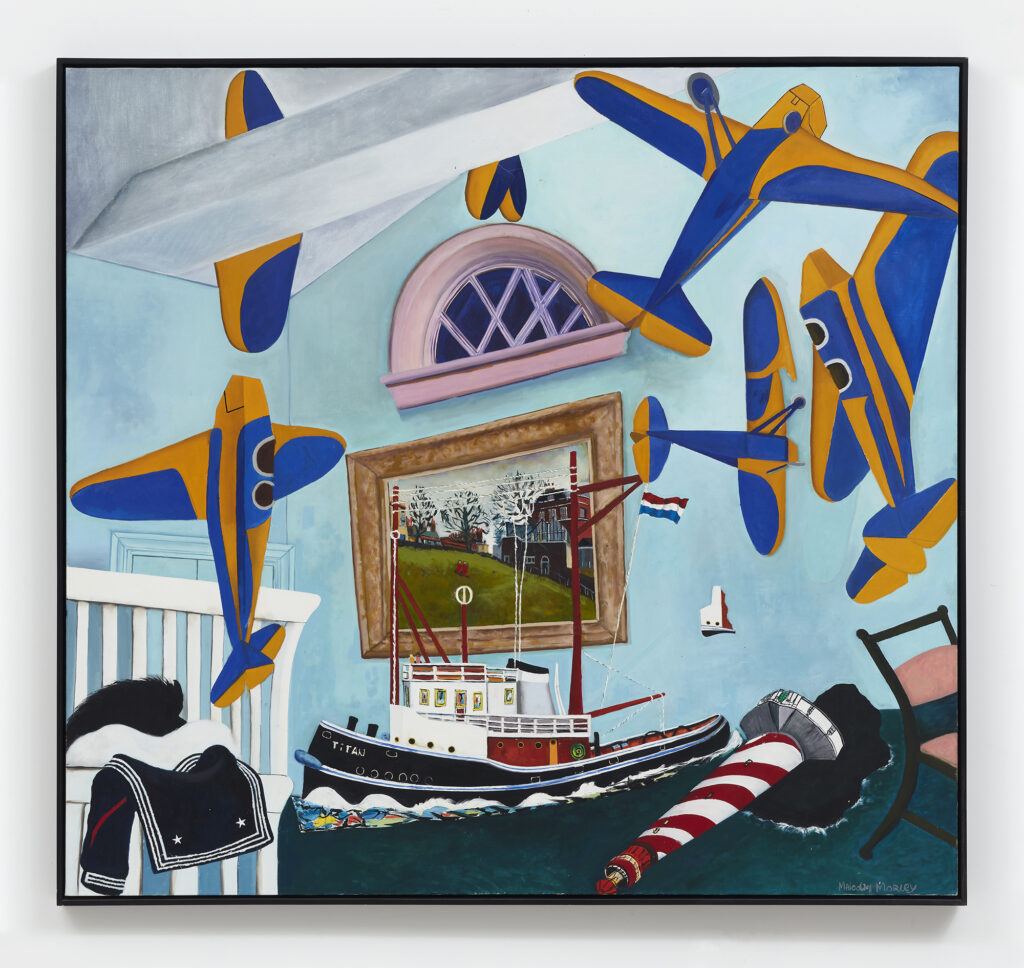
In more recent years, Morley was engaged with a style he dubbed “Super-Post-Pop.” He turned to hallucinogenic compositions featuring antique warplanes and ship models, as in Titan (1994), with sharp, carefully delineated hard-edge forms, flat planes of color, and skewed perspectives. Despite their cartoonish sense of play and deadpan execution, these works served Morley—as well as today’s art audiences—as potent metaphors for the mutable folly of military might and the endemic instability of political power.

This exhibition is organized by Petzel Gallery, New York, where it is on view from June 20 to August 2.